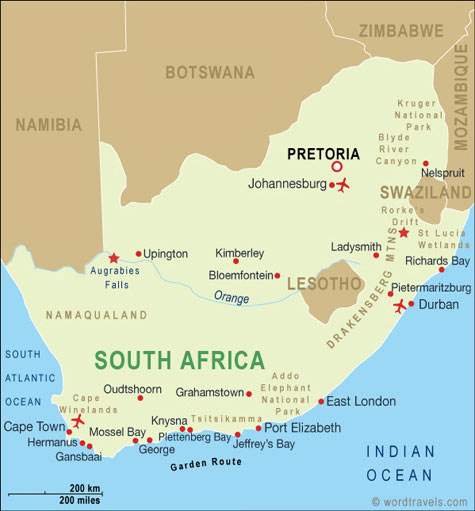South Africa is a country which consists of around 49,991,300 people. These people can be divided into four ethnic groups, the white, the black, the colored and the Asian. South Africa also has eleven official languages. With this many different people there are bound to be conflicts. In this blog post I will study racism problems in South Africa and how Africa's background affects this.
 South Africa was ruled by apartheid between 1948 and 1994. Apartheid was a system of legal racial segregation and was enforced by the National Party government of South Africa. In the time of apartheid the white people maintained their minority rule. The inhabitants of South Africa where divided into four groups, where the white people where the only ones with the right to vote. The other three groups, who where the majority of the population where discriminated against in almost every way possible. There where restrictions as to where they were allowed to work, shop, live and even where they were allowed to sit and go to the bathroom. Racial segregation in South Africa had been known since colonial times, but it was first in 1998 it was legalized. Many people fought against apartheid, and among them where Nelson Mandela.
South Africa was ruled by apartheid between 1948 and 1994. Apartheid was a system of legal racial segregation and was enforced by the National Party government of South Africa. In the time of apartheid the white people maintained their minority rule. The inhabitants of South Africa where divided into four groups, where the white people where the only ones with the right to vote. The other three groups, who where the majority of the population where discriminated against in almost every way possible. There where restrictions as to where they were allowed to work, shop, live and even where they were allowed to sit and go to the bathroom. Racial segregation in South Africa had been known since colonial times, but it was first in 1998 it was legalized. Many people fought against apartheid, and among them where Nelson Mandela.Nelson Mandela was born in South Africa in 1918 and became South Africa’s first black president in 1994. He was also the first president who had been freely selected by all citizens of the country, and he won by a landslide. For a long time Nelson Mandela had been an activist in fighting against apartheid, and for this he was sent to prison. He spent 27 years of his life on Robben Island which was a prison for political prisoners. Mandela was released in 1990 and immediately began working for a multiethnic democracy in South Africa. He gained the Nobel Prize for this work in 1993. In 1994 Nelson Mandela became president and apartheid was at an end. In his homeland South Africa people called him Madiba, which is a name of honor used on older members of his tribe. Nelson Mandela had become a symbol of peace and equality both nationally and internationally.
In class we saw the movie Invictus, which is a true story. This movie was about how Nelson Mandela, after reaching presidency, tried to rid South Africa of racism. Not all white people where happy with a black president and some of the black people thought that now they would be the ones on top. Nelson Mandela tried to peacefully change people’s opinions about each other. He wanted to make people realize that even though they came in different colors they were all worth the same. In the movie Mandela’s opinions become clear when he supports a rugby team that used to be a front for racism. He tries to unite South Africa in support of their country’s rugby team. At first neither the white people nor the black people like this, but in the end when the team win’s it looks like Mandela is one step closer to his goal.
Today the different ethnic groups are still affected by the apartheid politics. This is very visible when we look at South Africa’s economics. The white people still control most of the country’s resources, while mostly black people live close to poverty. You can also find traces of apartheid politics in crime. Close to 2000 white farmers have been killed by black farmers since Mandela took over in 1994.
Sources:
Haugum, Eva with others, Worldwide
The movie Invictus, 2009

.jpg)








